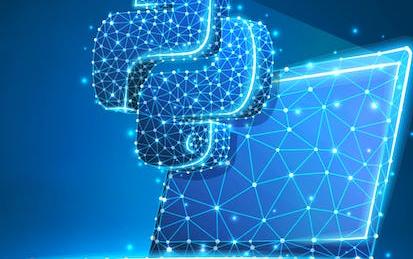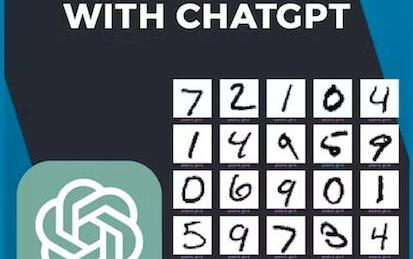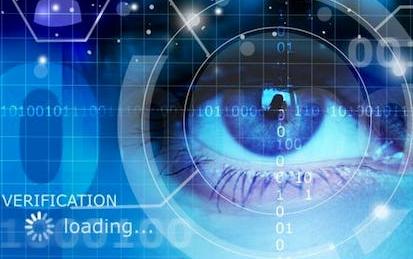

Our Courses

Introduction to Image Processing
In this introduction to image processing, you'll take your first steps in accessing and adjusting digital images for analysis and processing. You will load, save, and adjust image size and orientation while also understanding how digital images are recognized. You will then perform basic segmentation and quantitative analysis. Lastly, you will enhance the contrast of images to make objects of interest easier to identify. By the end of the course, you’ll apply your segmentation skills to identify regions of interest, such as the amount of surface water from satellite images.
-
Course by

-
 Self Paced
Self Paced
-
 11 hours
11 hours
-
 English
English

Python per la Data Science
Python per la Data Science è un corso cruciale per qualsiasi professionista che voglia analizzare grandi quantità di dati attraverso le più recenti tecniche di machine Learning e Deep learning. Il core del corso è rappresentato dall’utilizzo dei notebook: una nuova forma di fruizione dei contenuti didattici in cui testo e teoria sono affiancati a numerosi codici eseguibili e modificabili. Il formato è visivamente simile ad un file PDF a cui si aggiunge l’interattività tipica dei prodotti software. Il risultato?
-
Course by

-
 Self Paced
Self Paced
-
 19 hours
19 hours
-
 Italian
Italian

Image Segmentation, Filtering, and Region Analysis
In this course, you will build on the skills learned in Introduction to Image Processing to work through common complications such as noise. You’ll use spatial filters to deal with different types of artifacts. You’ll learn new approaches to segmentation such as edge detection and clustering. You’ll also analyze regions of interest and calculate properties such as size, orientation, and location. By the end of this course, you’ll be able to separate and analyze regions in your own images. You’ll apply your skills to segment an MRI image of a brain to separate different tissues.
-
Course by

-
 Self Paced
Self Paced
-
 10 hours
10 hours
-
 English
English

CUDA at Scale for the Enterprise
This course will aid in students in learning in concepts that scale the use of GPUs and the CPUs that manage their use beyond the most common consumer-grade GPU installations. They will learn how to manage asynchronous workflows, sending and receiving events to encapsulate data transfers and control signals.
-
Course by

-
 Self Paced
Self Paced
-
 English
English

Distributed Image Processing in Cloud Dataproc
This is a self-paced lab that takes place in the Google Cloud console. In this lab, you will learn how to use Apache Spark on Cloud Dataproc to distribute a computationally intensive image processing task onto a cluster of machines.
-
Course by

-
 Self Paced
Self Paced
-
 1 hour
1 hour
-
 English
English

Image and Video Processing: From Mars to Hollywood with a Stop at the Hospital
In this course, you will learn the science behind how digital images and video are made, altered, stored, and used. We will look at the vast world of digital imaging, from how computers and digital cameras form images to how digital special effects are used in Hollywood movies to how the Mars Rover was able to send photographs across millions of miles of space. The course starts by looking at how the human visual system works and then teaches you about the engineering, mathematics, and computer science that makes digital images work.
-
Course by

-
 Self Paced
Self Paced
-
 21 hours
21 hours
-
 English
English

Getting started with ImageJ
At the end of this project, you will learn how to use download and get started with ImageJ and how to use the main commands of this software for image processing and analysis, among other scientific. This guided project is for people interested in image analysis, such as determining the number or size of objects in an image, for scientific or personal reasons. ImageJ is a free downloadable online software that offers a very wide variety of tools for image processing and can be particularly effective for scientific analysis. After completing this project, you will have access to the ImageJ soft
-
Course by

-
 Self Paced
Self Paced
-
 4 hours
4 hours
-
 English
English

Exam Prep AI-102: Microsoft Azure AI Engineer Associate
The AI-102: Designing and Implementing a Microsoft Azure AI Solution certification exam tests the candidate’s experience and knowledge of the AI solutions that make the most of Azure Cognitive Services and Azure services.
-
Course by

-
 Self Paced
Self Paced
-
 16 hours
16 hours
-
 English
English

Machine Learning for Computer Vision
In the second course of the Computer Vision for Engineering and Science specialization, you will perform two of the most common computer vision tasks: classifying images and detecting objects. You will apply the entire machine learning workflow, from preparing your data to evaluating your results.
-
Course by

-
 Self Paced
Self Paced
-
 12 hours
12 hours
-
 English
English

Data Science with NumPy, Sets, and Dictionaries
Become proficient in NumPy, a fundamental Python package crucial for careers in data science. This comprehensive course is tailored to novice programmers aspiring to become data scientists, software developers, data analysts, machine learning engineers, data engineers, or database administrators. Starting with foundational computer science concepts, such as object-oriented programming and data organization using sets and dictionaries, you'll progress to more intricate data structures like arrays, vectors, and matrices.
-
Course by

-
 Self Paced
Self Paced
-
 31 hours
31 hours
-
 English
English

Introduction to Machine Learning with Python
This course will give you an introduction to machine learning with the Python programming language. You will learn about supervised learning, unsupervised learning, deep learning, image processing, and generative adversarial networks. You will implement machine learning models using Python and will learn about the many applications of machine learning used in industry today. You will also learn about and use different machine learning algorithms to create your models. You do not need a programming or computer science background to learn the material in this course.
-
Course by

-
 Self Paced
Self Paced
-
 13 hours
13 hours
-
 English
English

Camera and Imaging
This course covers the fundamentals of imaging – the creation of an image that is ready for consumption or processing by a human or a machine. Imaging has a long history, spanning several centuries. But the advances made in the last three decades have revolutionized the camera and dramatically improved the robustness and accuracy of computer vision systems. We describe the fundamentals of imaging, as well as recent innovations in imaging that have had a profound impact on computer vision. This course starts with examining how an image is formed using a lens camera.
-
Course by

-
 Self Paced
Self Paced
-
 17 hours
17 hours
-
 English
English

GIS Image Analysis in ArcGIS Pro
Learn fundamentals of remote sensing, image analysis, image processing and its application to real-world problems such as changing water bodies, vegetation health, and wildfire severity.
-
Course by

-
 Self Paced
Self Paced
-
 20 hours
20 hours
-
 English
English

Machine Learning with ChatGPT: Image Classification Model
In this 1-hour project, you will learn how to build a machine learning model using ChatGPT. We will use the MNIST database which is a large database of handwritten digits that is commonly used for training various image processing systems. You will be introduced to the process of fine-tuning, which involves adjusting the model's parameters to learn task-specific relationships between input and output. You will import the necessary libraries and load the data, and then split the data into training and testing sets.
-
Course by

-
 Self Paced
Self Paced
-
 3 hours
3 hours
-
 English
English

Automating Image Processing
In this course, you will build on the skills acquired in Image Segmentation, Filtering, and Region Analysis to explore large sets of images and video files. It’s impractical to manually inspect results in large data sets. Automating image processing allows you to do your work more efficiently. At the end of this course, you’ll apply all the skills learned in this specialization to a final project. You’ll take the role of an engineer being asked to monitor traffic on a busy road. You’ll detect cars from a noisy video and analyze the results. You will use MATLAB throughout this course.
-
Course by

-
 Self Paced
Self Paced
-
 13 hours
13 hours
-
 English
English

Computer Vision for Engineering and Science
Cameras are an integral component in many new technologies. Autonomous systems use cameras to navigate their environment, while doctors use small cameras to help guide minimally invasive surgical techniques. It is essential that engineers use computer vision techniques to extract information from these types of images and videos. In this specialization, you’ll gain the computer vision skills underpinning many of today’s top jobs.
-
Course by

-
 Self Paced
Self Paced
-
 English
English

Image Processing for Engineering and Science
As cameras become widespread, there are endless opportunities to process images and videos. This specialization is intended for engineers and scientists who need to analyze, design, and build systems using images or videos. You will explore real-world applications like: · How quickly is arctic ice melting? · Does an MRI image show a healthy brain? · Are large cracks appearing in a foundation? · What is the traffic flow during peak hours of the day? You will use MATLAB throughout this specialization.
-
Course by

-
 Self Paced
Self Paced
-
 English
English

Getting started in cryo-EM
This class covers the fundamental principles underlying cryo-electron microscopy (cryo-EM) starting with the basic anatomy of electron microscopes, an introduction to Fourier transforms, and the principles of image formation.
-
Course by

-
 Self Paced
Self Paced
-
 21 hours
21 hours
-
 English
English

Image Processing with Python
Image processing has been used to create weird and beautiful modifications to pictures many of us have seen online.
-
Course by

-
 Self Paced
Self Paced
-
 4 hours
4 hours
-
 English
English

Computer Vision and Image Processing Fundamentals
Learn about computer vision, one of the most exciting fields in machine learning. artificial intelligence and computer science.
-
Course by

-
 Self Paced
Self Paced
-
 10
10
-
 English
English

Introduction to Computer Vision and Image Processing
Computer Vision is one of the most exciting fields in Machine Learning and AI. It has applications in many industries, such as self-driving cars, robotics, augmented reality, and much more. In this beginner-friendly course, you will understand computer vision and learn about its various applications across many industries. As part of this course, you will utilize Python, Pillow, and OpenCV for basic image processing and perform image classification and object detection. This is a hands-on course and involves several labs and exercises.
-
Course by

-
 Self Paced
Self Paced
-
 22 hours
22 hours
-
 English
English

Object Tracking and Motion Detection with Computer Vision
In the third and final course of the Computer Vision for Engineering and Science specialization, you will learn to track objects and detect motion in videos. Tracking objects and detecting motion are difficult tasks but are required for applications as varied as microbiology and autonomous systems. To track objects, you first need to detect them. You’ll use pre-trained deep neural networks to perform object detection.
-
Course by

-
 Self Paced
Self Paced
-
 14 hours
14 hours
-
 English
English

Introduction to Data, Signal, and Image Analysis with MATLAB
Welcome to Introduction to Data, Signal, and Image Analysis with MATLAB! MATLAB is an extremely versatile programming language for data, signal, and image analysis tasks. This course provides an introduction on how to use MATLAB for data, signal, and image analysis.
-
Course by

-
 Self Paced
Self Paced
-
 23 hours
23 hours
-
 English
English



